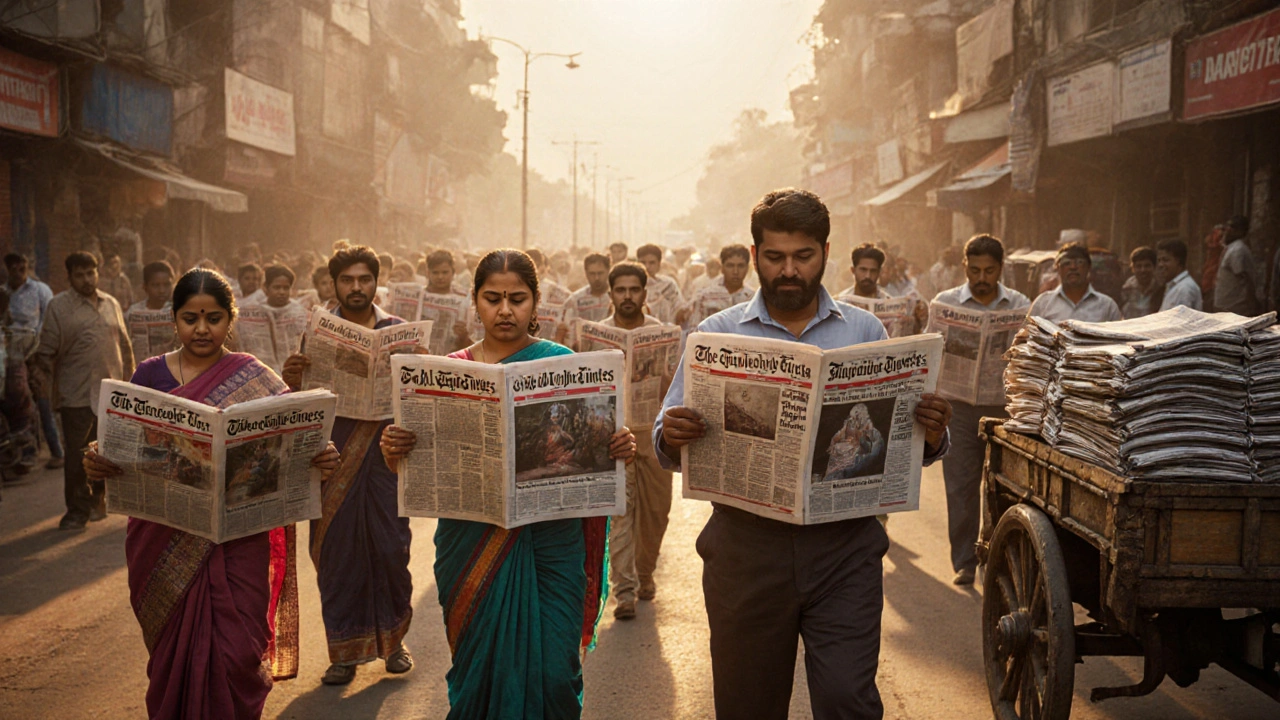World Newspaper Circulation: Why Print News Is Fading and What Replaces It
When we talk about world newspaper circulation, the total number of physical newspapers sold globally each day. Also known as print news sales, it’s been falling for over a decade—not slowly, but like a building with its foundation ripped out. In 2000, over 200 million newspapers were sold daily in the UK alone. By 2025, that number had dropped below 40 million. The same story plays out in the US, Germany, Japan, and Australia. People aren’t just reading less—they’re stopping buying paper entirely.
This isn’t just about younger people preferring TikTok. It’s about trust, speed, and cost. Digital news is free, instant, and personalized. If you want to know what happened in London this morning, you don’t wait for the paper to arrive at 6 a.m. You check your phone at 5:30. Meanwhile, the money that kept newspapers alive—advertisers—vanished. Shops and car dealers stopped buying full-page ads because online targeting works better and costs less. Local papers, which once covered school plays and council meetings, shut down first. Without them, communities lost their watchdogs. No one’s checking if the new housing project is legal. No one’s asking why the bus route got cut.
print media decline, the steady reduction in physical newspaper production and distribution. Also known as the end of print journalism, it’s not just about fewer copies printed—it’s about what disappears with them. When a local paper dies, civic engagement drops. Voter turnout falls. Corruption goes unchecked. Even national papers like the Daily Mail and The Guardian now push digital subscriptions hard, while their print editions shrink to weekend-only. The Guardian’s print run? Down 70% since 2010. BBC News doesn’t even print a paper anymore. And yet, people still talk about "the newspaper" like it’s a single, stable thing. It’s not. It’s a relic.
newspaper readership, who still picks up a paper and why. Also known as print audience, it’s mostly older adults—people over 60 who grew up with the morning paper and don’t trust algorithms to pick their news. But even that group is fading. A 2024 survey in Greater London found only 12% of people over 65 read a physical paper daily. The rest get headlines from WhatsApp groups, YouTube summaries, or push alerts. The ones who still buy papers? They’re not doing it for news. They’re doing it for comfort. For the smell of ink. For the quiet ritual before the day starts. That’s not a business model. That’s nostalgia.
What’s replacing newspapers? Algorithms. Apps. Chatbots. TikTok explainers. YouTube anchors with 20 million subscribers who break stories faster than any journalist. But here’s the catch: none of them are paid to dig. None of them are held accountable when they get it wrong. The Daily Express, Guardian, and BBC still have reporters on the ground. But their reach? Shrinking. Their budgets? Cut. Their staff? Exhausted.
So what does this mean for you? If you care about truth, accountability, or even just knowing what’s happening in your neighborhood, you’re now responsible for finding it. You can’t rely on the paper on your doorstep. You need to know which sources still do real reporting. Which ones fact-check. Which ones have editors, not just AI. The posts below show you exactly that—how the collapse of print changed who speaks, who listens, and who gets left out. You’ll see how London’s biggest newsrooms are adapting, why some papers still matter, and which ones are just noise with a logo.
What is the most read newspaper in the world?
The Times of India is the most read newspaper in the world, with over 3.3 million daily print copies. It leads globally due to its affordability, wide reach across India, and deep cultural integration - far ahead of Western papers like The New York Times.
